IFP Week 2: Wine in History
Matt Price
Today's Lecture
Reminder: Origins of Alcohol
Defining "Wine"

Making Grape Wine
- wine is made from a cultivar of the Eurasian grape (Vitis vinifera L.
subsp. sylvestris)
- grapes have high sugar content, so high alcohol content is possible
- organized production for at least 8,000 years old, but possibly older
- To make wine:
- Separate juice from pulp
- Age juice in containers
- Seal so it does not spoil
Combining Archaeology, Economic, and Cultural History
- today's lecture starts in ancient times, and continues to the present
- we will combine many different kinds of evidence and arguments
- try to notice how I use sources, and think about how arguments rely on those sources!
The Oldest Wineries
- Godin Tepe (Iran) 6000 BCE
- Apeni (Armenia) 4100 BCE
- Shulaveris Gora (Georgia) 6000BCE
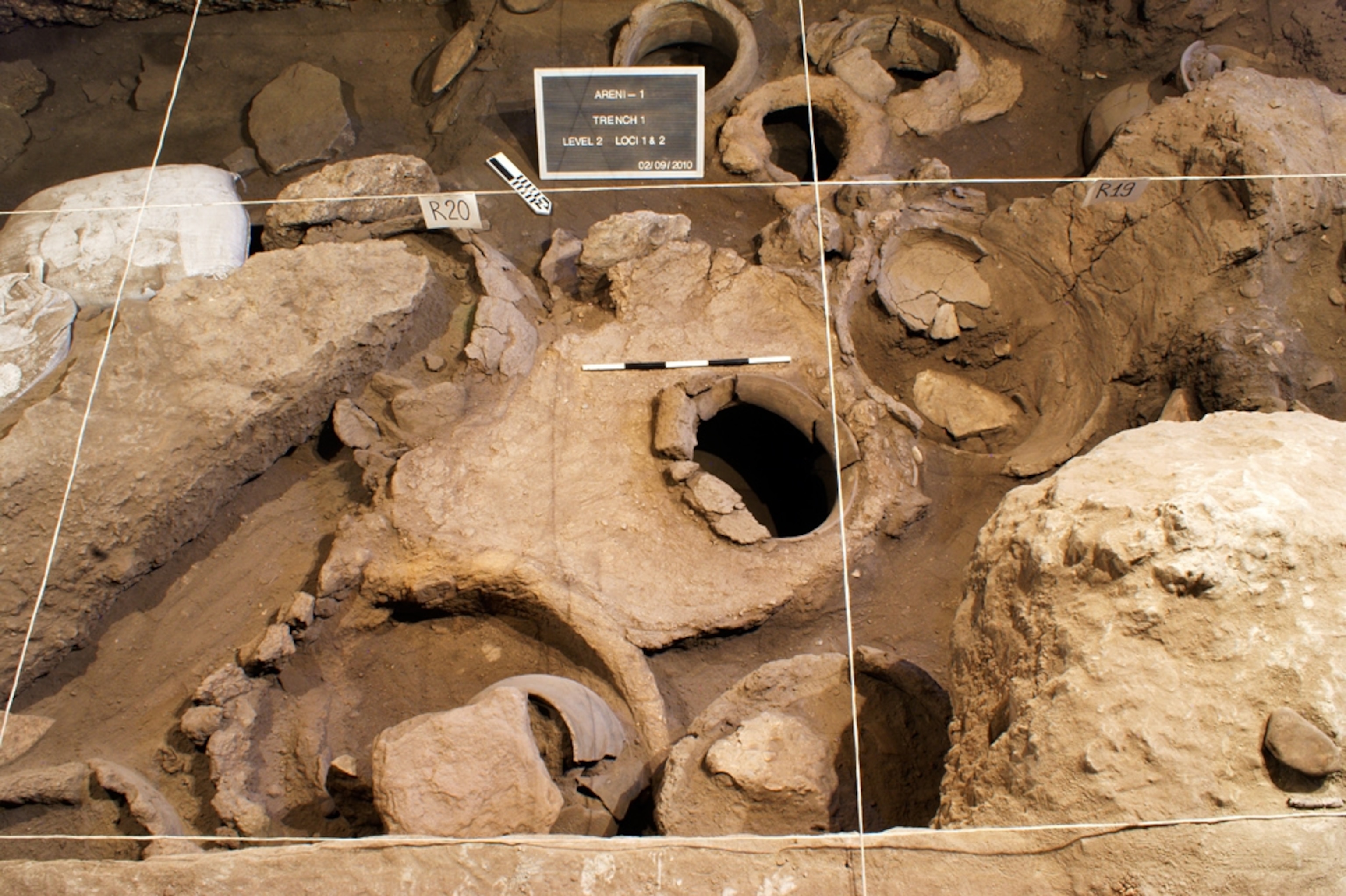
Wine In Ancient Egyptian Culture (4000BCE-300BCE)
- wine jars are found in ancient tombs as far back as 3150 BCE
- Hieroglyphs show workers (likely slaves) stomping on wine to extract juice, then pouring liquid into jars and sealing with wax
- Wine was part of a widespread trade: economically important
- expense led to a class distinction
- association of taverns and sex work led to a gendered understanding of drunkenness
- Wine was also part of cultural celebrations
To begin, a wooden image of a dead person was paraded around the gathering to show that death could come at any time so one should enjoy oneself while it was still possible. Taking their cue from the performance, guests felt free to overindulge in wine. Tomb paintings show that both elite men and women drank to excess; they display pictures of passed out men being carried away by their servants and women vomiting while their heads were held by their female servants. (Hames, 2014, p. 10)
- Religion: Osiris and Dionysius, the Dying Gods
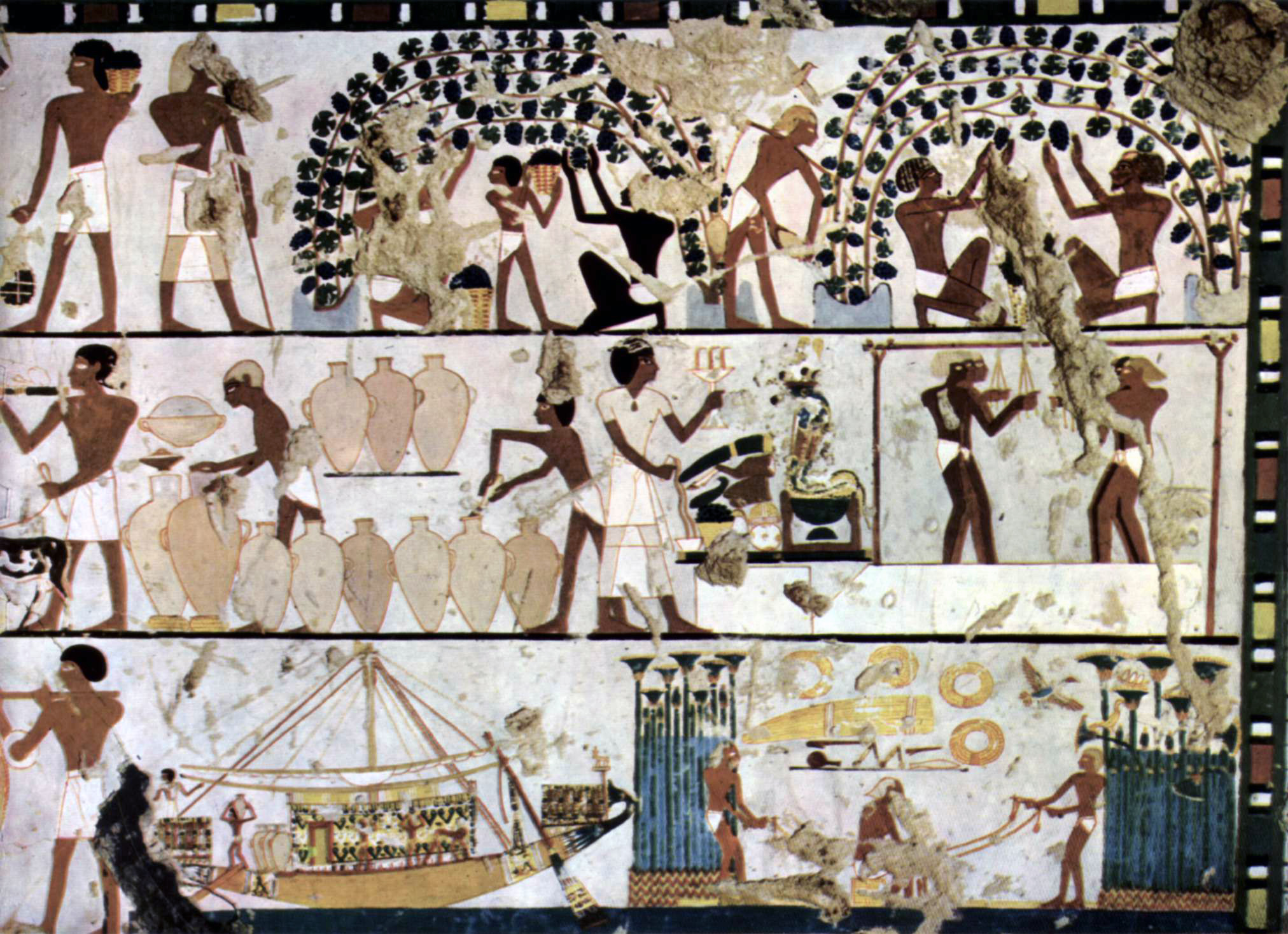
China: an ancient wine history
- No continuous history of Winemaking in China, but ancient vessels from Henan Province date from ~6500BCE and may have contained grapes
- Expeditions to Alexandrian (Greek) provinces in Western Asia result in import of wine grapes around ~200BCE
- many other fermented beverages in China, e.g. "rice wine"
Greece (800BCE-300BCE) : Dionysus
- Winemaking extremely widespread in ancient Greece
- Winemaking stpreads to China partly through contact with Greek colonies in Asia
- Economically and culturally important
- Drunkenness both sacred and dangerous (maenads)
- In the Odyssey, Odyseus escapes from monstrous Cyclops by getting them drunk
- In Athens, wine is crucial to "Symposium"
- women not permitted!
- drunkenness drowned on but still common
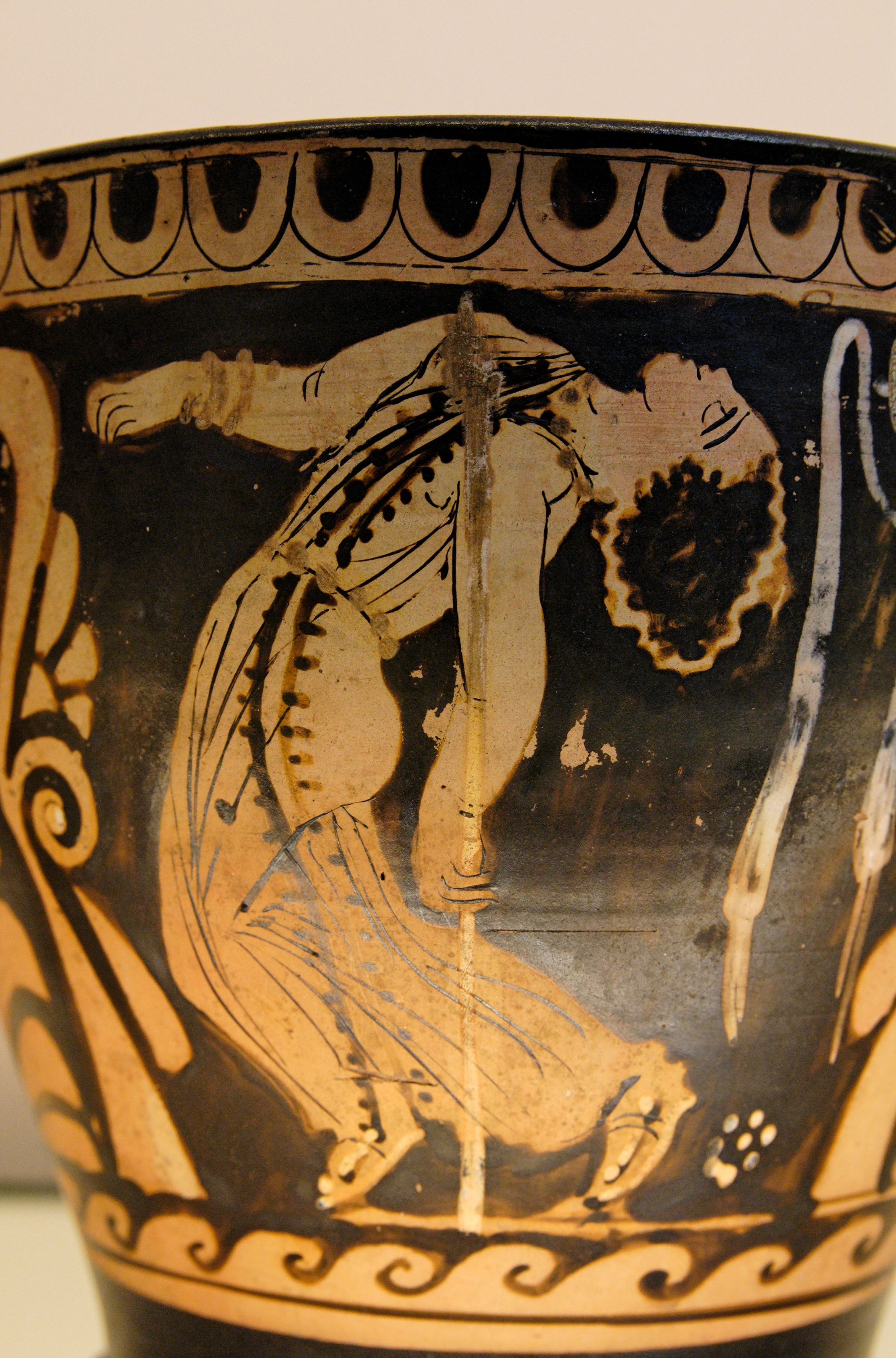

Rome (750BCE-450CE)
- Rome: highly organized military and eonomic powerhouse
- Wine, olives, and grain are 3 largest trade commodities
- Professionalization of winemaking on large vineyards
- Vineyards spread across Europe and "Near East" along with Roman conquests
- vineyards established by Romans continued to thrive even after fall of empire
- Cultivation of many grape varieties
- in "convivium", Roman elites drank to excess after meals, but wine was also served to common soldiers
- Dionysus becomes "Bacchus"

Christianity
- Wine referenced many times in Jewish and Christian Bibles
- Jesus turned water into Wine
- Holy Sacrament of Eucharist requires Wine ("This is my blood")
- vineyards become associated with monasteries

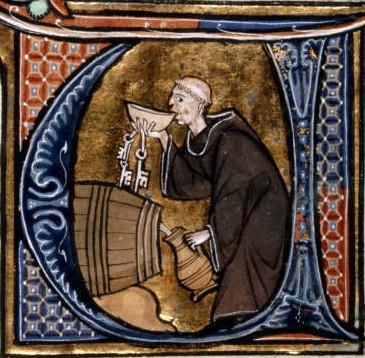
Wine in Medieval Europe and Middle East
- In Middle East, rise of Islam → prohibition of alcohol
- In Europe, establishment of monastery system & slow rise of wine as status symbol
- 10th-13 Centuries CE see major economic expansion, demand for luxury goods
- some aristocratics spent ~40% of budget of wine (!!)
- wine secrets: wine guilds and intellectural property
- technological advances: larger wine presses, more careful agriculture
- development of local varieties associated with regions ("terroir")
- regulation of drunkenness starts to appear in law books
- masive increase in distillation!
- wine vs beer: a story of class

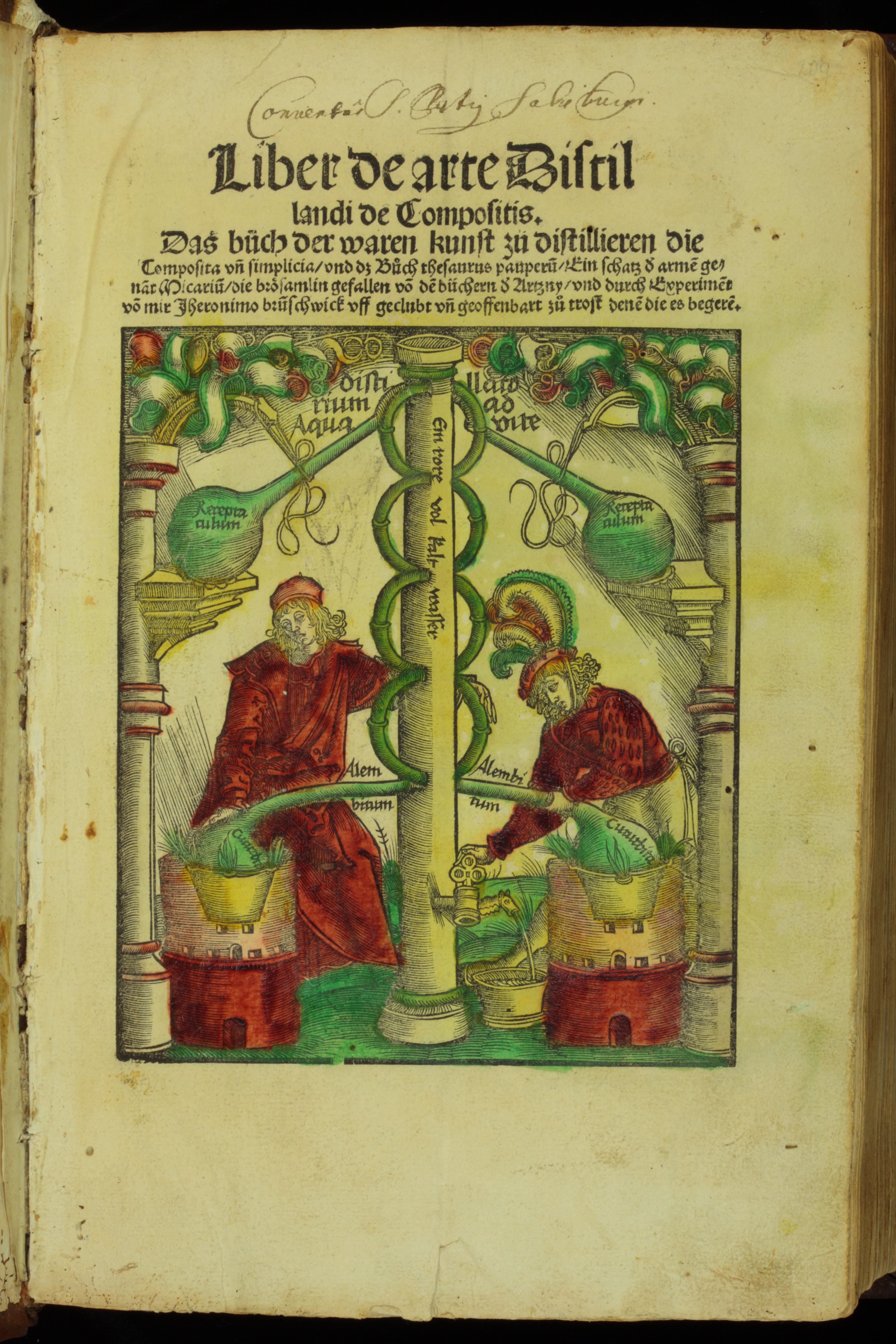
Wine and Alcohol in the 19th Century
- two competing trends:
- intensification/industrialization of alcohol production
- rise of "temperance" movements

Wine Classification Systems, Branding, and Terroir
- classification is a key component of industrial systems
- production: rigourous stnadardization ensures consistency
- distribution: branding relies on a consistent quality, but is also related to marketing and monopolies
- In wine, Frnch "Chateaux" were among the oldest status wines & the first to be classified
- Bordeaux Wine Classificaiton (Expo 1855): clasisfied all wine-making chateaux in the regeion of Bordeaux (soutwest France)
- eventually grew into / Appellations d’Origine Contrôlées/ in 1937
- System spread to many other places!
- Often leads to trade conflicts (e.g., "Champagne" in USA)
- Grape variety, terroir, other qualities are objects of contestation
- Economic Battles fought over "authenticity". Why?
Wine: Making the Modern World
Sources
anonymous. (14 C.E.). Tacuina sanitatis (XIV century). https://commons.wikimedia.org/wiki/File:29-autunno,Taccuino_Sanitatis,_Casanatense_4182.jpg
Brunschwig, H. (1512). Two figures work with one of alchemy’s more grounded practices: distillation. This fanciful depiction of distillation apparatus is from Hieronymus Brunschwig’s Liber de arte Distillandi de Compositis (Strassburg, 1512). https://commons.wikimedia.org/wiki/File:Hieronymus_Brunschwig_Liber_de_arte_Distillandi_CHF_AQ13x3.jpg
Culture. (2011). In Culture. https://www.nationalgeographic.com/culture/article/110111-oldest-wine-press-making-winery-armenia-science-ucla
Currier, N. (1846). The Drunkard’s Progress: from the first glass to the grave. https://commons.wikimedia.org/wiki/File:The_Drunkard%27s_Progress_-_Color.jpg
Egyptian wine. (2021). Wikipedia. https://en.wikipedia.org/w/index.php?title=Egyptian_wine&oldid=1007799310
Florio, D. (9 C.E.). English: A fresco from the thermopolium of Lucius Vetutius Placidus in the city of Pompeii, depicting the spirit (genius) of the house central, flanked by Lares and Penates with Mercury on far left, Bacchus far right.Italiano: Il “thermopolium” (una specie di “tavola calda”) di Lucio Vetuzio Placido a Pompei. L’affresco rappresenta il genio della casa, affiancato dai Lari e dai Penati con Mercurio sull’estrema sinistra e Bacco sull’estrema destra. https://commons.wikimedia.org/wiki/File:Ancient_Bar,_Pompeii.jpg
Hames, G. (2014). Alcohol in World History. Taylor and Francis. https://doi.org/10.4324/9780203463055
Mcgovern, P. E. (2019). Ancient Wine: The Search for the Origins of Viniculture. Princeton University Press.
McGovern, P., Jalabadze, M., Batiuk, S., Callahan, M. P., Smith, K. E., Hall, G. R., Kvavadze, E., Maghradze, D., Rusishvili, N., Bouby, L., Failla, O., Cola, G., Mariani, L., Boaretto, E., Bacilieri, R., This, P., Wales, N., & Lordkipanidze, D. (2017). PNAS Plus. Proceedings of the National Academy of Sciences, 114(48), E10309–E10318. https://doi.org/10.1073/pnas.1714728114
Pollinator. (2004). Elderberry Fruit 5081. In WIkipedia. https://commons.wikimedia.org/wiki/File:Elderberryfruit5081.JPG
Python. (330 C.E.). English: Dancing maenad. Detail from a Paestan red-figure skyphos, ca. 330-320 BC. https://commons.wikimedia.org/wiki/File:Dancing_maenad_Python_BM_VaseF253.jpg
Siena, A. of. (13 C.E.). An abbey cellarer testing his wine. Illumination from a copy of Li livres dou santé by Aldobrandino of Siena. British Library manuscript Sloane 2435, f. 44v. https://commons.wikimedia.org/wiki/File:Monk_sneaking_a_drink.jpg
Testa, P. (1648). Drunken Alcibiades interrupting the Symposium. https://commons.wikimedia.org/wiki/File:TestaAlcibiades.jpg
Vos, M. d. (1596). The Marriage at Cana. https://commons.wikimedia.org/wiki/File:Marten_de_Vos_Cana.jpg
Yashima, G. (2021). Umeshu. https://en.wikipedia.org/w/index.php?title=Umeshu&oldid=1030172002